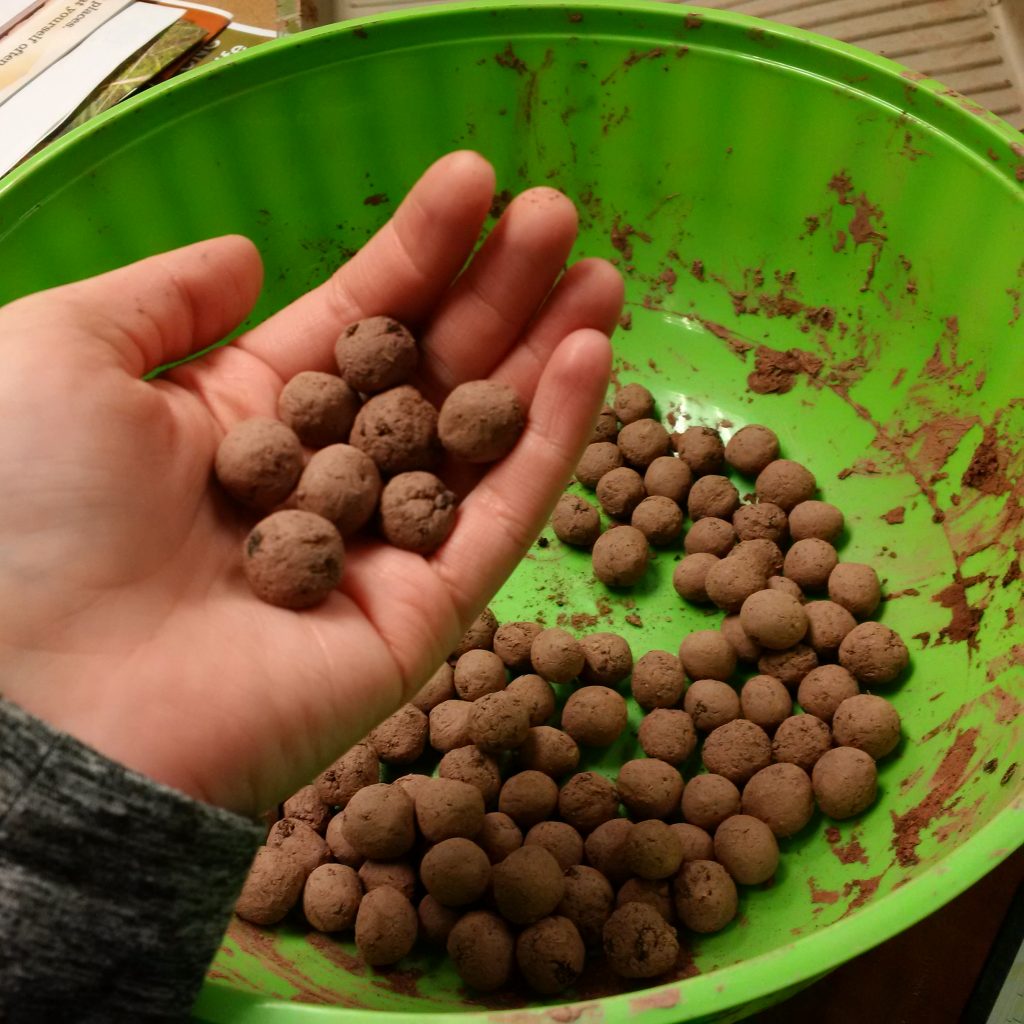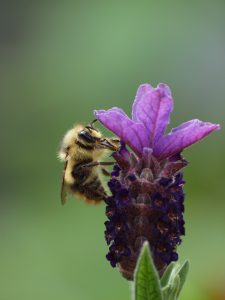Bee Bombs

BY STEPH WEIZENBACH, NATURE NETWORK COORDINATOR
Pollinators, including bees, are in trouble because of habitat loss, pesticide use, and climate change. Bees are important to us because they pollinate plants in nature, farmers fields, and even in our vegetable gardens. You can help the bees with this fun activity!
What you need:
- ¾ cup of soil or compost
- ¾ cup wet potter’s clay
- Variety of native flower seeds*
- Large mixing bowl
What to do:
1: Using your hands, mix the wet clay and soil together, thoroughly, in a large mixing bowl.
2: Pinch off one teaspoon worth of soil mixture — about the size of a marble — and press 3 to 5 seeds in the middle.
3: Roll, roll, roll the soil mixture and seeds into a ball in the palms of your hand. Set the bee bomb aside to dry.
4: Repeat Steps 1, 2, and 3, until all of the mixture is used up. This makes about 100–150 bee bombs!
5: Get outside and drop your bombs in your garden and anywhere else you have permission to plant. The rain will water your wildflowers.
Beautiful native flowers will grow from your bee bombs to feed the bees for years to come. Thank you for helping our buzzing bee friends!

Bee by Doris May
* Seeds for the Bees
We recommend these flowers for your bee bombs because they grow naturally in Alberta, provide food for bees, and are perennials, meaning they will grow back every year:
- brown-eyed Susan, Gaillardia aristata
- giant hyssop, Agastache foeniculum
- low milkweed, Asclepias ovalifolia
- meadow blazingstar, Liatris ligulistylis
- smooth fleabane, Erigeron glabellus
- wild bergamot, Monarda fistulosa
To find a seed supplier in Alberta, visit the Alberta Native Plant Council at anpc.ab.ca. In Edmonton, visit the Edmonton Native Plant Society at edmontonnativeplantgroup.org.
Steer clear of generic wildflower mixes. Many generic seed mixes include flowers that are invasive weeds in Alberta. Once invasive weeds get growing, they outcompete our native flowers and prevent them from flourishing. This reduces biodiversity, meaning there are less species of flowers for the bees to feed on. Variety is important to keep our environment healthy and resilient.
Watch a “How To” video by Nature Conservancy of Canada: https://youtu.be/hURzGJZVLis
This article originally ran in Nature Alberta Magazine - Spring 2021.
Thank you to our funding partners:


